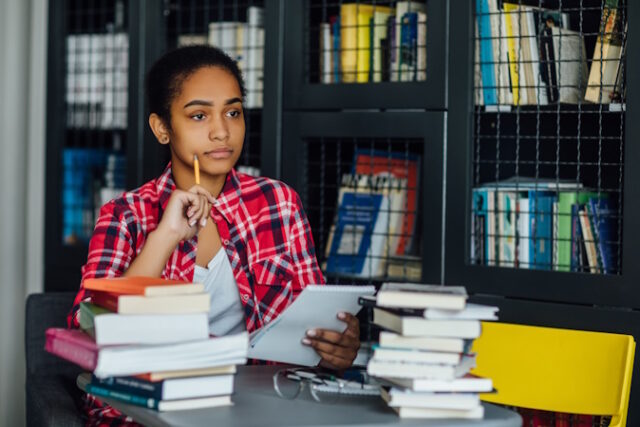
Tailoring study strategies to individual learning styles can significantly enhance academic performance and make studying more enjoyable. Each student has a unique way of processing information, whether through reading/writing methods, or visual, auditory, or even kinesthetic techniques. Understanding and leveraging your learning style allows for a more effective and personalized study approach.
Visual learners benefit from diagrams and written directions, while auditory learners thrive with verbal instructions and discussions. Kinesthetic learners need hands-on experiences, and reading/writing learners excel through extensive note-taking and reading. Identifying your learning style and adopting specific study techniques can transform your academic journey, making study sessions more productive and engaging.
Discovering Different Learning Styles
Understanding different learning styles is crucial for developing effective study strategies. Each learner processes information uniquely, whether through visual aids, auditory input, hands-on experiences, or written words. Here is a simple guide to the different styles of learning and how to leverage them to tailor your study strategy.
Reading/Writing Learners
Characteristics: Reading/writing learners excel through written words. They prefer to read texts and write out notes and often find it easier to process information presented in written form. These learners benefit from extensive reading and detailed note-taking, and they may have a preference for lists, journals, and written summaries.
Strategies: Making detailed written notes and summaries is crucial for reading/writing learners. Reading extensively from textbooks, articles, and other written materials can help reinforce learning. Writing out study material in your own words and creating lists can aid in understanding and retention.
Tools: Utilizing written study materials, such as textbooks, articles, and study notes, is essential for reading/writing learners. Keeping a comprehensive journal or notebook for summarizing information and writing out practice essays can also be beneficial. Digital tools like word processors and note-taking apps can help organize and streamline the study process.
Example: Creating detailed study material and written summaries can significantly improve the learning experience for reading/writing learners. By immersing themselves in written content and organizing their notes effectively, these learners can enhance their comprehension and retention, making exam prep more efficient and enjoyable.
Visual Learners
Characteristics: Visual learners prefer to see and observe things, including pictures, diagrams, written directions, and charts. They tend to remember information better when it is presented visually and often have a strong sense of color and spatial awareness. These learners benefit from the use of color-coded notes and can visualize objects, plans, and outcomes in their mind’s eye.
Strategies: For visual learners, it’s crucial to incorporate visual elements into study routines. Color-coded notes can help differentiate between topics and concepts, making it easier to recall information during exams. Flashcards with images or diagrams are effective tools for memorizing facts and details. Mind maps are also beneficial as they allow visual learners to see connections between different pieces of information, enhancing their understanding and retention.
Tools: Visual learners should make use of tools like charts, graphs, and infographics to aid their study sessions. These tools help in organizing and visualizing complex information, making it more digestible. Digital tools and apps that offer visual aids, such as interactive diagrams and customizable flashcards, can be particularly useful. Incorporating these elements into study material can make the learning process more engaging and effective.
Example: Utilizing visual study materials like mind maps and color-coded notes can significantly improve comprehension and retention for visual learners. By creating detailed visual aids and integrating them into study routines, visual learners can enhance their ability to recall and understand complex information during exams.
Auditory Learners
Characteristics: Auditory learners excel when information is presented to them verbally. They have a good ear for tones, rhythms, and patterns, and often learn best through listening and speaking. These learners benefit from lectures, discussions, and audio recordings, and they may find it helpful to read text aloud or use mnemonic devices to aid memory.
Strategies: Participating in group discussions and study groups can be highly beneficial for auditory learners, as these activities involve listening and verbal communication. Listening to recorded lectures and audiobooks allows auditory learners to absorb information while engaging in other tasks. Reading aloud can also reinforce learning, as it combines both visual and auditory processing.
Tools: Auditory learners should make use of audio-based study tools, such as podcasts and recorded lectures. These tools provide the opportunity to review study material on the go, making it easier to fit study sessions into a busy schedule. Using mnemonic devices and rhymes can help with memorizing facts and concepts. Recording and listening to your own voice explaining topics can be an effective study method.
Example: Leveraging audio recordings of lecture notes and group discussions can enhance the learning experience for auditory learners. By incorporating these auditory tools into study routines, students can improve their comprehension and retention of study material. This method allows auditory learners to engage with the content in a way that aligns with their natural learning preferences, making exam prep more effective and enjoyable.
Kinesthetic Learners
Characteristics: Kinesthetic learners prefer hands-on experiences and learn best through movement and touch. They often excel in activities that involve physical manipulation of objects, and they may find it difficult to sit still for long periods. These learners benefit from engaging in practical activities and real-world simulations that allow them to physically interact with the material.
Strategies: Kinesthetic learners should incorporate physical activities into their study sessions. Engaging in experiments, building models, and participating in role-playing activities can help reinforce learning. Taking regular breaks to move around and using hands-on study aids like 3D models can make studying more effective for these learners.
Tools: Tools that involve physical interaction, such as tactile learning aids and interactive simulations, are ideal for kinesthetic learners. Apps and software that offer virtual labs and hands-on exercises can provide the tactile experience these learners need. Incorporating movement into study routines, such as studying while walking or using a standing desk, can also be beneficial.
Example: Using hands-on study guides and interactive study methods can greatly enhance the learning process for kinesthetic learners. By engaging with the material in a physical way, these learners can improve their understanding and retention, making exam prep more productive and enjoyable.
Tailoring your study strategies to match your learning style can greatly improve your academic success and make studying more enjoyable. This personalized approach will enhance your comprehension and retention and make your study sessions more efficient and less stressful. Identifying and utilizing the right study strategies can transform your educational experience.
Disclaimer
The information contained in South Florida Reporter is for general information purposes only.
The South Florida Reporter assumes no responsibility for errors or omissions in the contents of the Service.
In no event shall the South Florida Reporter be liable for any special, direct, indirect, consequential, or incidental damages or any damages whatsoever, whether in an action of contract, negligence or other tort, arising out of or in connection with the use of the Service or the contents of the Service. The Company reserves the right to make additions, deletions, or modifications to the contents of the Service at any time without prior notice.
The Company does not warrant that the Service is free of viruses or other harmful components












